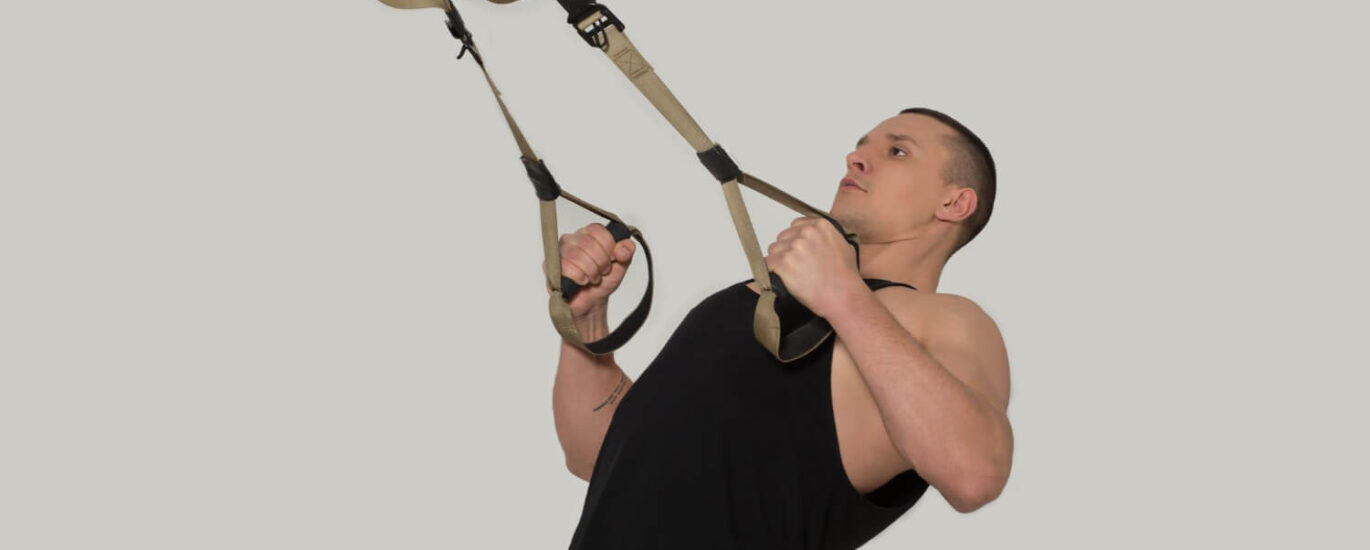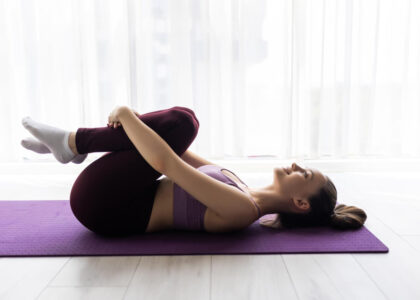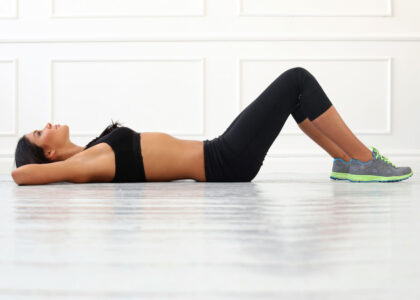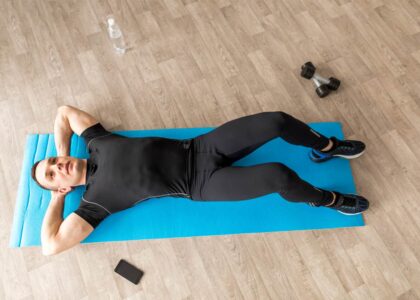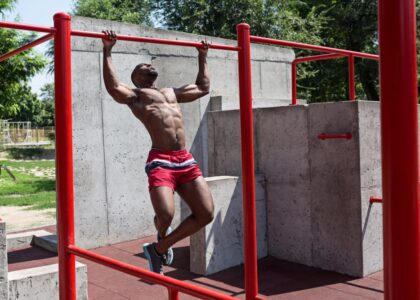Strength | Leg Extension Alternatives | Hip Thrust Alternatives
The face pull is a staple rear delt exercise in many upper body workouts. By pulling a rope straight back towards your face, it isolates the posterior deltoids like few other moves can. But not everyone has access to a cable machine to perform face pulls. And even if you do, it helps to switch up the exercises you do for muscle confusion and to avoid overuse injuries. Luckily, there are plenty of effective face pull alternative exercises to target the same muscle groups.
These face pull substitutions work your rear delts, rotator cuffs, upper back, and more by mimicking the unique pulling motion of the face pull. In this article, we share the 7 of the best face pull alternatives. None require expensive machines and many utilize dumbbells, resistance bands, or simply bodyweight. So no matter where you workout or your available equipment, you’ll find a viable face pull alternative here to incorporate into your next back or shoulder routine.
What Muscles Are Involved With Face Pull Alternative Exercises:
The main muscles targeted by face pull alternatives are the same ones worked in the cable face pull. This includes the posterior deltoids, rotator cuff muscles, rhomboids, and traps. Let’s discover these face pull muscles worked in detail.
- Posterior deltoids : The posterior deltoids are the prime movers in these face pull alternatives. They are located at the back of your shoulders, this muscle group gets isolated during the pulling motion.
- Rotator cuff muscles : Your rotator cuff muscles, including the infraspinatus and teres minor, are secondary movers. These smaller muscles stabilize your shoulder joint as you pull weight back.
- Rhomboid muscles : The rhomboid muscles in the upper back contract isometrically to keep the shoulders retracted during the move.
- Traps : Finally, the traps receive some activation at the top contracted portion of the pull when you fully retract the scapula.
What is the face pull exercise ?
Together, these muscle groups make up the key areas targeted by cable rope face pulls and any face pull alternative exercises. So swapping the equipment but keeping the same motions will still train all these muscles in the upper back and rear delt area.
The face pull is a popular upper back exercise that specifically targets the posterior deltoid muscles in the shoulders and the rotator cuff muscles. To perform a face pull, you stand with a cable machine or resistance band anchored at about head height. Gripping the rope, bar, or handles attached to the cable, you pull it directly back towards your face while keeping your shoulders squared and arms extended in front of you. As you pull, focus on retracting your shoulder blades to work the back muscles.
The face pull gets its name from the motion of pulling the rope back towards your face. When executed properly with good form, it isolates the rear delts, rhomboids, traps, and rotator cuffs. It’s an excellent exercise for improving posture by strengthening the muscles that stabilize the shoulders. The unique pulling motion targets the smaller muscles often missed in other back and shoulder exercises as well. Face pulls are popular with experienced lifters, athletes, physical therapy patients, and others looking to balance push-focused chest routines. They can be done with a variety of equipment, working one arm or both, in both horizontal and vertical motions.
Top 7 Face Pull Alternatives
1. T-Bar Row Machine
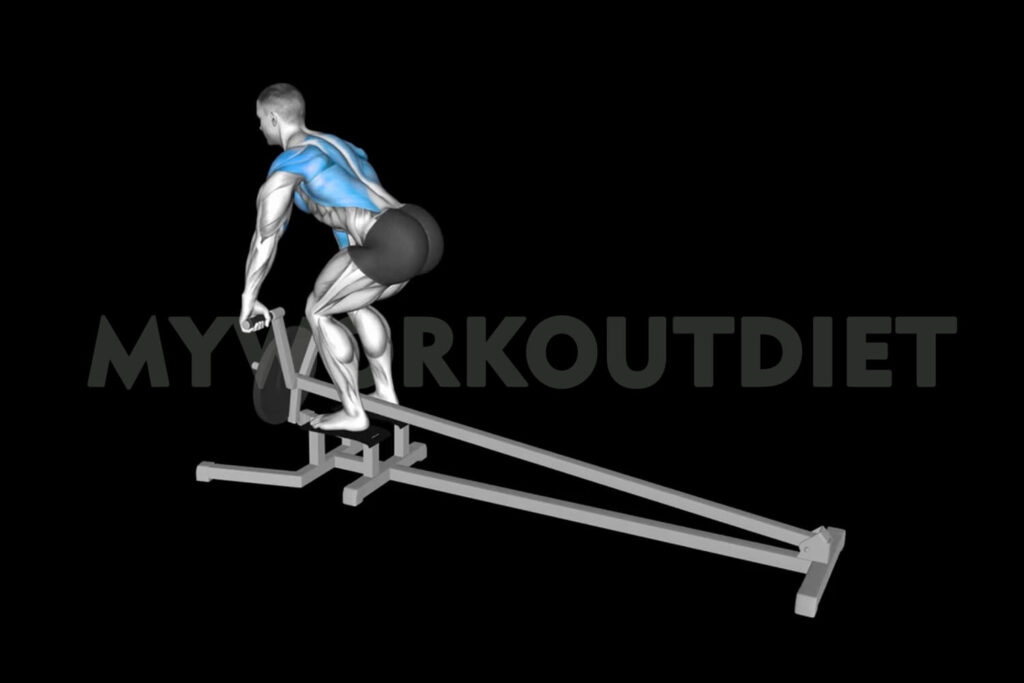
- Add weight to the T-bar machine and select the appropriate grip attachment (neutral, angled, or rope).
- Stand centered in front of the machine gripping the handles tight at shoulder width.
- Keeping your torso stationary and engaged, drive your elbows back to pull the handles towards your midsection. Focus on squeezing the shoulder blades at full contraction.
- Slowly return the weight stack to the starting position by straightening arms.
Tips
- Maintain a straight line with your body – no leaning or swinging.
- Initiate the movement by first retracting the shoulders before pulling with the arms.
- Use a shoulder-width grip or angled handles to increase focus on the rear delts.
- Take advantage of the fulcrum to use heavier weights than a free cable face pull.
Reps
Aim for sets of 10-15 reps with a weight load allowing you to maintain control and form for all reps. Rest 1-2 minutes between sets. You can also perform higher reps with lighter loads for muscular endurance.
As a face pull alternative, the T-bar row targets the posterior deltoids strongly at the contracted position. It also works the middle traps, rhomboids, lats, and biceps as secondary mover muscles.
2. Wide Grip Barbell Upright Row
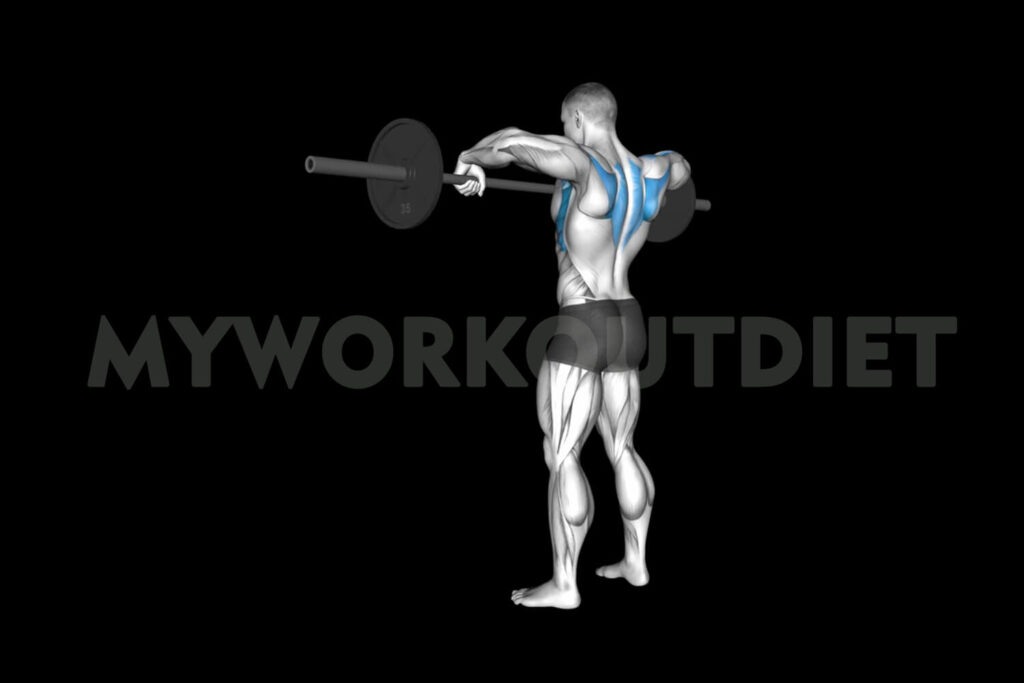
- Stand holding a barbell with an overhand grip that is about 1.5x your shoulder width. Hands should be equidistant.
- Initiate the movement by retracting your shoulder blades, pulling them back and down to engage the upper back.
- Leading with your elbows, lift the barbell straight up towards your chin, keeping it close to your body throughout.
- Slowly get back to the starting position with control movement.
Tips
- Use lighter weight and higher reps for greater isolation in the shoulder muscles.
- Don’t lean back or swing the torso to lift more weight.
- Experiment with grip widths outside and inside shoulder width.
- You can substitute dumbbells if you don’t have a barbell at home.
Reps
Aim for sets of at least 12-15+ reps with upright rows, allowing muscular endurance over max strength since it’s a face pull alternative. Use enough weight to fail by rep target.
Upright rows primarily engage the lateral deltoid muscles but do mimic the shoulder retraction of a face pull alternatives at home using free weights.
3. Cable Seated Rear Lateral Raise
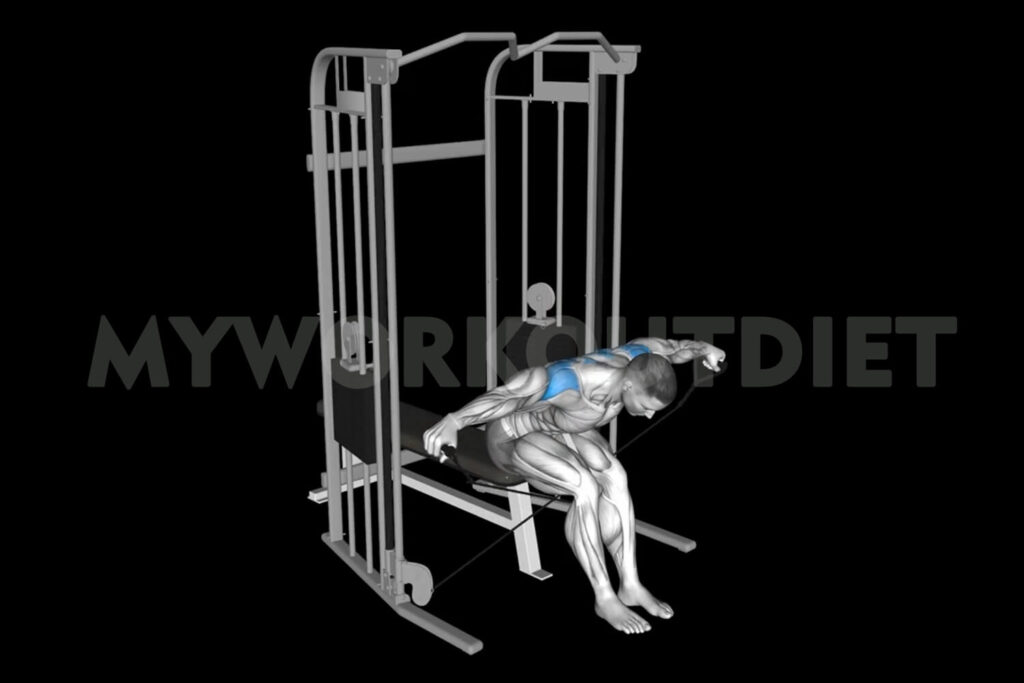
- Attach a rope handle to a high pulley cable machine and sit facing the weight stack.
- Grip the ends of the rope handle in each hand with palms facing each other.
- Sit tall, brace your core, and keep a slight bend in the elbows.
- Initiate the movement by pulling your shoulders back, then raise your arms straight out to the sides until parallel with the ground.
- Slowly return to the starting position by lowering the arms.
Tips:
- Use lighter weight to maintain tension on the rear delts throughout the movement.
- Avoid leaning forward or arching your lower back.
- Experiment with one versus two hands on the rope handle.
- Get a full contraction by squeezing shoulder blades together at the top.
Reps:
Aim for higher rep ranges like 3 sets of 12-15 reps. Enough weight to fail by your last rep target.
This rear delt flye alternative offers the same horizontal shoulder retraction pattern as the face pull for isolating the posterior deltoids using cables or resistance bands.
4. Barbell Shrug
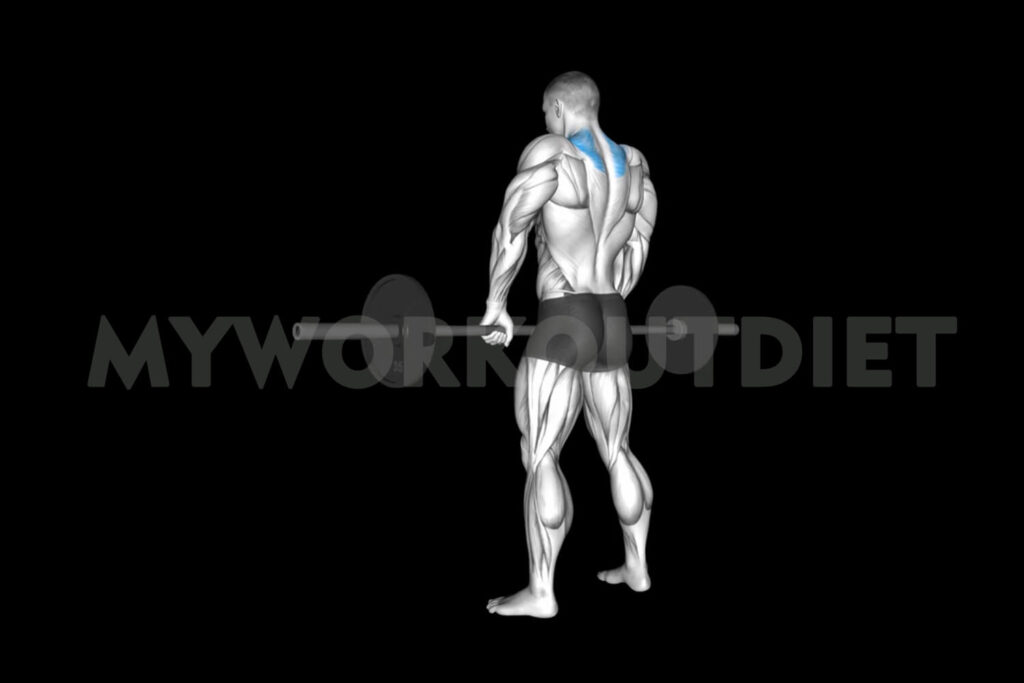
- Stand holding a barbell with an overhand grip at shoulder-width.
- Keep your arms extended in front of you and your back straight.
- Initiate the shrug by retracting your shoulder blades straight up towards your ears.
- Pause briefly at the fully contracted position then slowly lower back down.
Tips:
- Use a shoulder-width or narrower grip to better engage the trapezius muscles.
- Lift the shoulders as high as possible to increase muscle activation.
- Avoid swinging the body or bending the elbows.
- You can substitute dumbbells or kettlebells held at your sides.
Reps:
Aim for 10-15 reps for 3-4 sets with a moderate weight load.
While primarily targeting the traps, barbell shrugs mimic the shoulder retraction of the face pull to also engage the rhomboids, rear delts, and rotator cuffs. It recreates the upper back contraction using resistance that allows progressive overload.
5. Chair Inverted Row
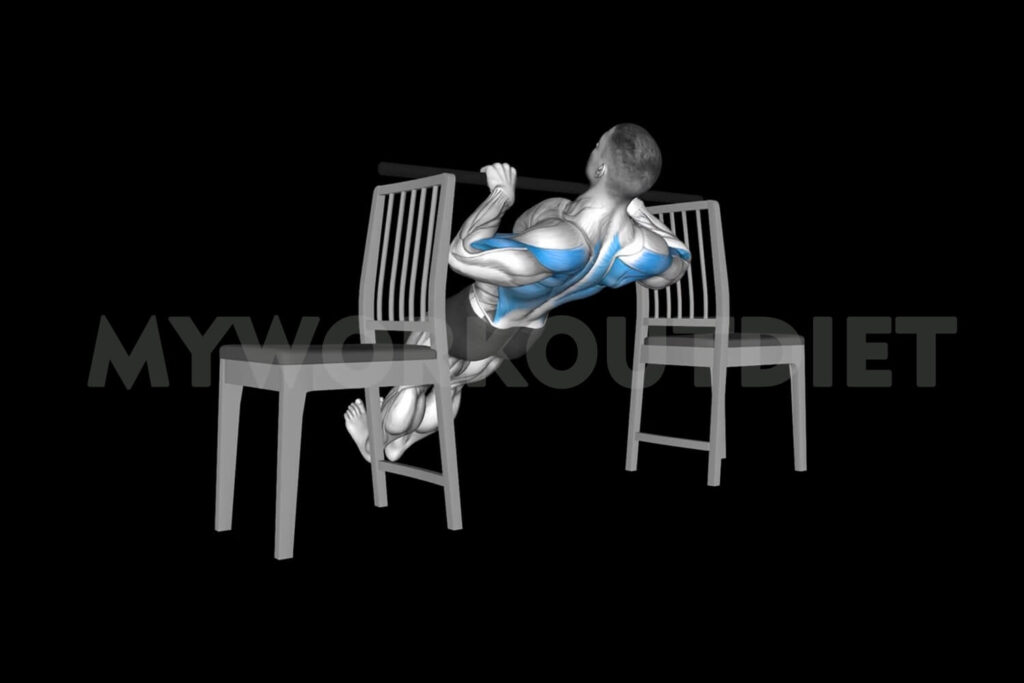
- Set a chair against a sturdy object and place your feet on the ground in front, gripping chair edges shoulder-width.
- Keeping legs straight and back flat, hang extended beneath the chair grips to begin.
- Initiate movement by pulling your shoulder blades together as you lift your chest to the chair.
- Slowly straighten your arms to get back to the start position.
Tips:
- Engage core throughout movement to avoid swinging or sagging.
- Retract shoulders fully at the top contracted position.
- Elevate feet for increased difficulty.
Reps:
Aim for 3 sets of 10-15 reps using bodyweight, allowing full contraction by final rep.
Using your own bodyweight and a sturdy chair, the inverted row mimics the face pull retraction pattern to target similar muscles like the rear delts, traps, and rhomboids at home without equipment for a challenging exercise.
6. Incline Barbell Rows
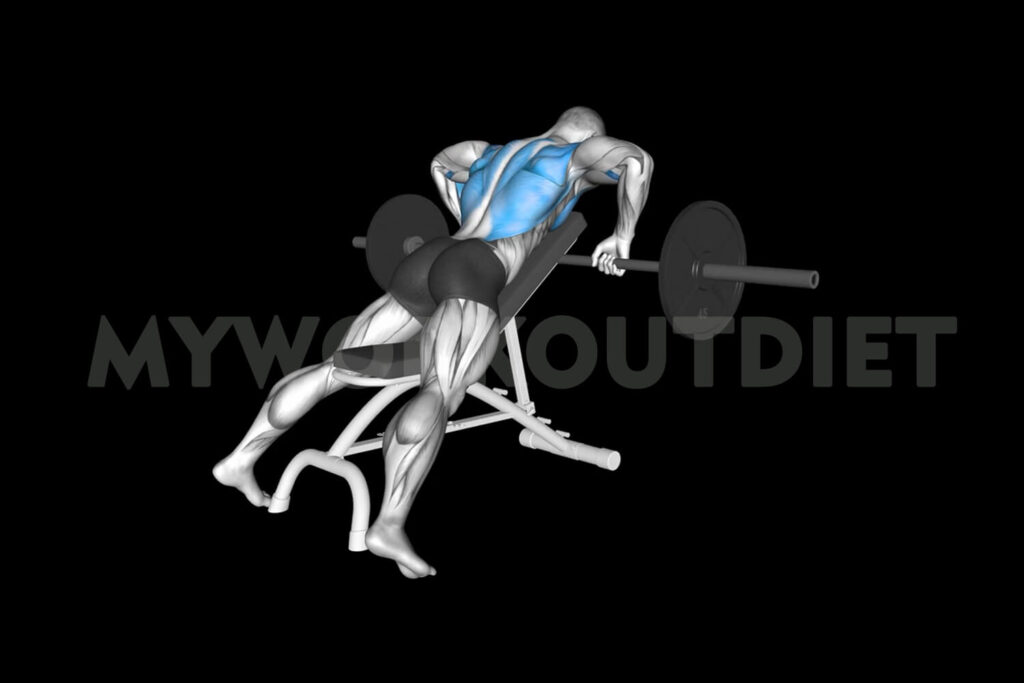
- Holding a barbell with an overhand grip, bend at the waist with a flat back over an incline bench set to 45 degrees.
- Allow arms to hang straight down towards the floor, initiating movement by retracting the shoulder blades.
- Drive elbows up and back to pull the barbell straight into the lower abdomen.
- Slowly straighten arms to return weight to starting position.
Tips:
- Lighten weight and increase reps for greater shoulder focus.
- Squeeze shoulder blades fully at contraction.
- Avoid twisting or turning the torso.
- You can use dumbbells or resistance bands as face pull alternatives.
Reps:
Aim for higher rep ranges like 3 sets of 15-20 reps for muscular endurance given it’s a face pull alternative. Use enough weight to reach failure on final reps.
The inclined barbell row allows the upper back muscles to work through a larger range of motion. At the top contracted position, it recreates the shoulder retraction of the cable face pull.
7. Reverse Fly Machine With Overhand Grip
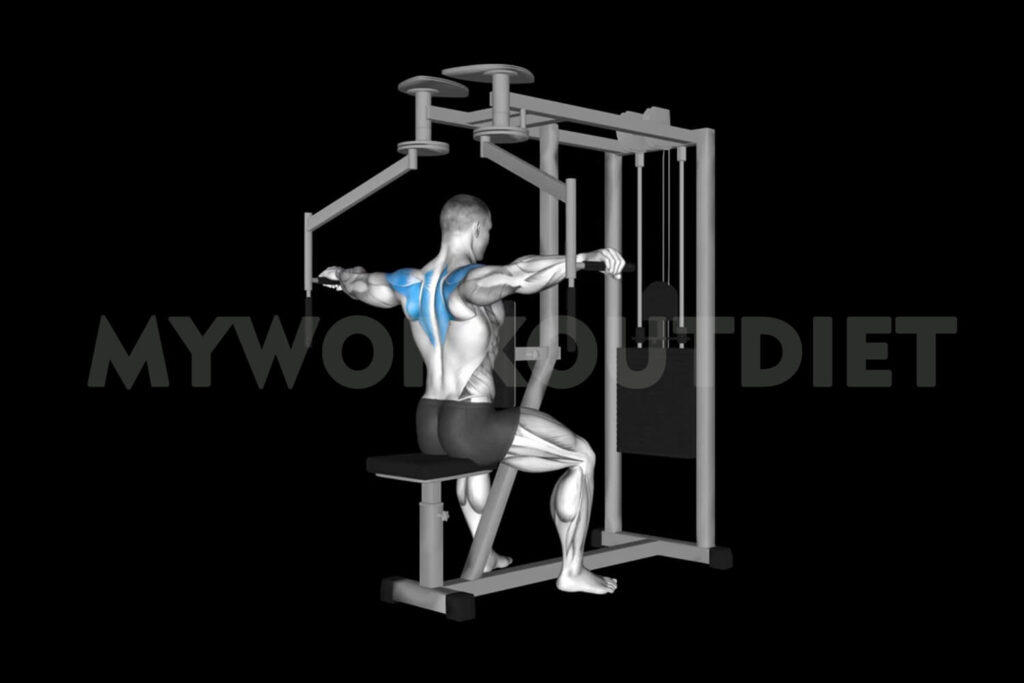
- Adjust the reverse fly pad height to suit your height and grab the handles using an overhand grip.
- Keeping your back upright and engaged, retract your shoulders to initiate the movement.
- Drive your elbows out and back, pulling the handles as far apart as comfortable.
- Slowly return to the starting position by allowing your arms to cross in front of you.
Tips:
- Maintain tension on the rear delts throughout the motion.
- Squeeze the shoulder blades at full contraction.
- Avoid using momentum – control both directions.
- Can perform a single arm for extra challenge.
Reps:
Aim for higher reps of 10-15 for 3 sets. Choose appropriate weight to reach failure by final rep.
This machine variation focuses on isolating the smaller muscles like the rear deltoids, rotator cuff, lower traps rather than lats or rhomboids. The overhand grip and back-to-front motion optimizes the contraction.
Conclusion
The face pull may reign supreme for isolating those smaller, often-neglected muscles in the upper back and rear delts. But the good news is you can achieve similar sculpting results without a cable machine by incorporating viable face pull alternatives. Substitute exercises like the T-bar row, wide grip upright row, cable rear lateral raise, and incline barbell row mimic the shoulder retraction pattern critical for targeting the posterior deltoids, rotator cuffs, rhomboids and traps. Bodyweight and free weight options can also build an impressive upper back definition.
The inverted row uses your own weight against gravity while barbell shrugs enable progressive overload at a challenging level. Just be sure to use proper form – drawing the shoulder blades down and back on each rep – with higher rep ranges for muscular endurance. Though the equipment and exercises differ, these face pull alternatives duplicate the muscle activation of cables for those difficult to reach areas. So forget the excuses and sculpt well-defined shoulders and upper back musculature with one of these effective substitutes done anywhere.
